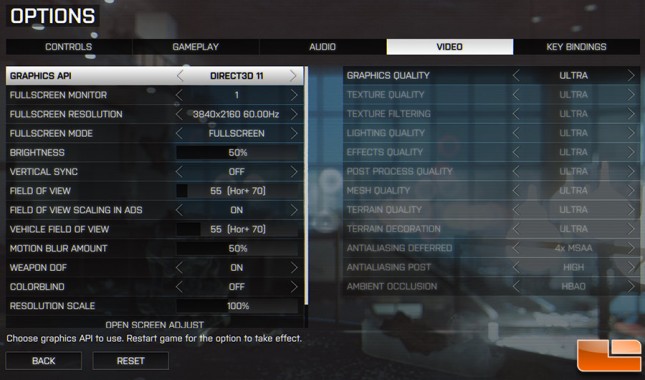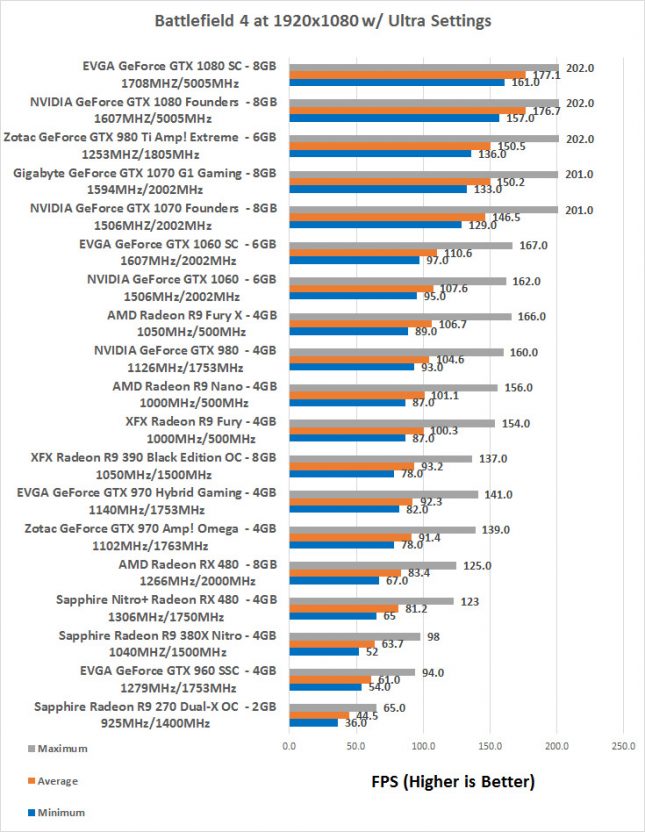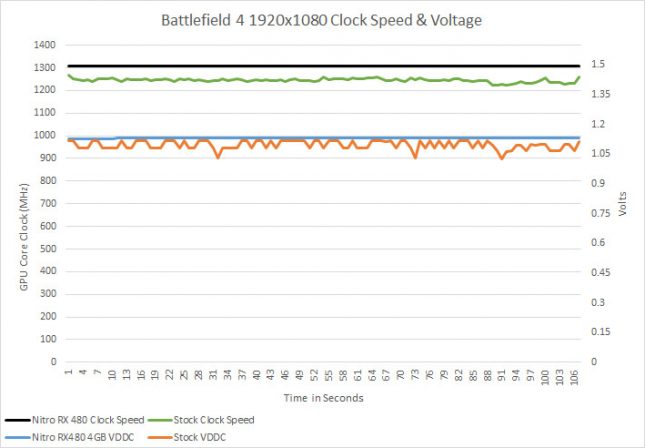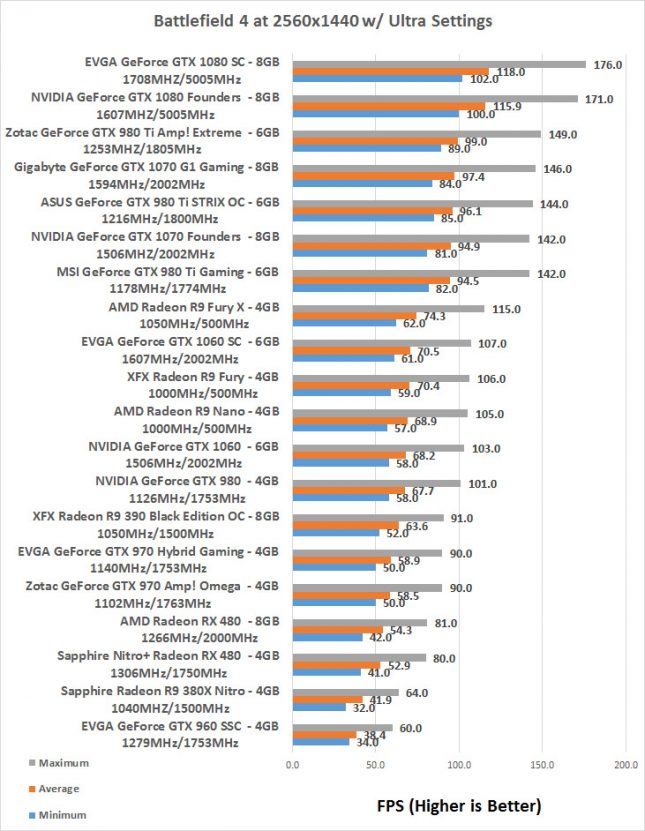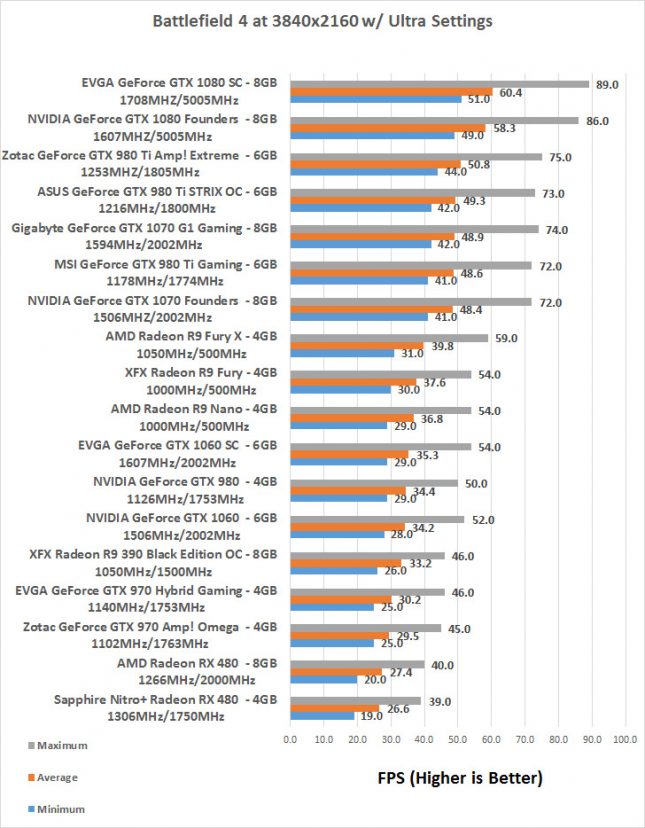Sapphire Nitro Radeon RX 480 4GB Video Card Review
Battlefield 4
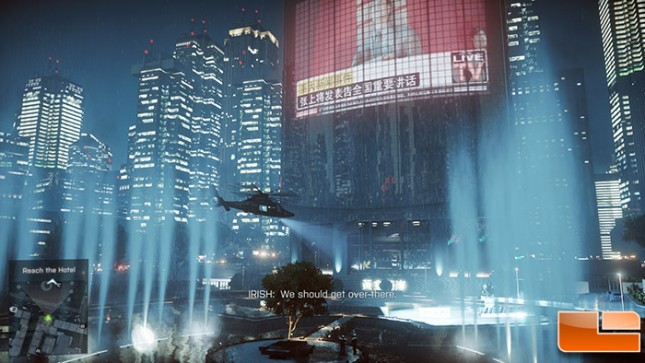
Battlefield 4 is a first-person shooter video game developed by EA Digital Illusions CE (DICE) and published by Electronic Arts. It is a sequel to 2011’s Battlefield 3 and was released on October 29, 2013 in North America. Battlefield 4’s single-player Campaign takes place in 2020, six years after the events of its predecessor. Tensions between Russia and the United States have been running at a record high. On top of this, China is also on the brink of war, as Admiral Chang, the main antagonist, plans to overthrow China’s current government; and, if successful, the Russians will have full support from the Chinese, bringing China into a war with the United States.
This game title uses the Frostbite 3 game engine and looks great. We tested Battlefield 4 with the Ultra graphics quality preset as most discrete desktop graphics cards can easily play with this IQ setting at 1080P and we still want to be able to push the higher-end cards down the road. We used FRAPS to benchmark with these settings on the Shanghai level. All tests were done with the DirectX 11 API.
Benchmark Results: At the popular 1080p gaming resolution, the Sapphire Nitro RX 480 4GB was found to be just slightly slower than the AMD Radeon RX 480 8GB reference card. This sounds strange at first since the Nitro RX 480 4GB card has a higher clock speed (1306MHz versus 1266MHz) and is able to maintain it longer, but it’s due to the memory clock speed. There is notable difference between 7000MHz and 8000MHz memory on the Radeon RX 480 as we showed in this article.
A quick look at the GPU-Z logs showed that the Sapphire Nitro Radeon RX 480 4GB clock speed maintained 1306MHz the entire benchmark run and the voltage started out at 1.125V and then stayed at 1.1313V for the remainder of the time that we played this particular game title. The AMD Radeon RX 480 8GB could not maintain 1266MHz and bounced around 1223MHz to 1266MHz over the course of the benchmark. Clearly, the memory clock speed is a significant bottleneck on this card. We feel this way as Sapphire overclocked the core and was able to hold high clock speeds with the Dual-X cooler, but performance was below the reference card and we triple checked everything. Of course, it really depends on the game title you are looking at as some titles were faster on Sapphire card than the reference.
Benchmark Results: When scaling the resolution up to 2k (21601440), the Nitro RX 480 was averaging about 53 FPS.
Benchmark Results: When it comes to 4k UHD gaming we can see why the Radeon RX 480 is not marketed at a 4K gaming graphics card! We won’t bother showing any other 4K benchmark results in this review as this isn’t a 4K gaming graphics card.

